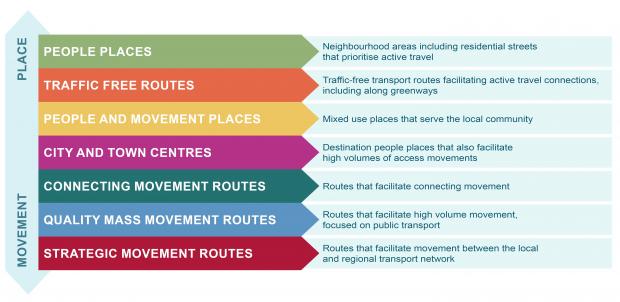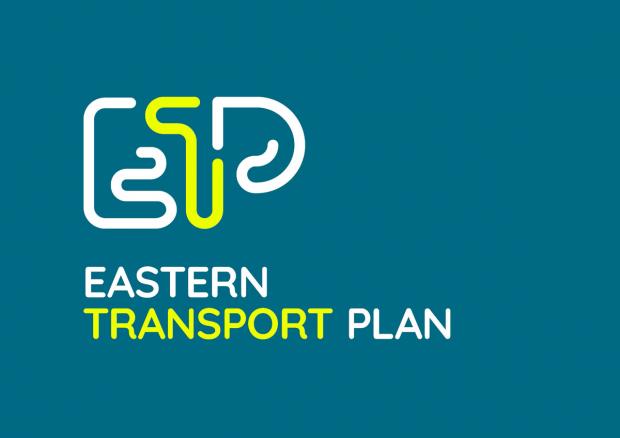
Introduction
The new ETP encompasses the following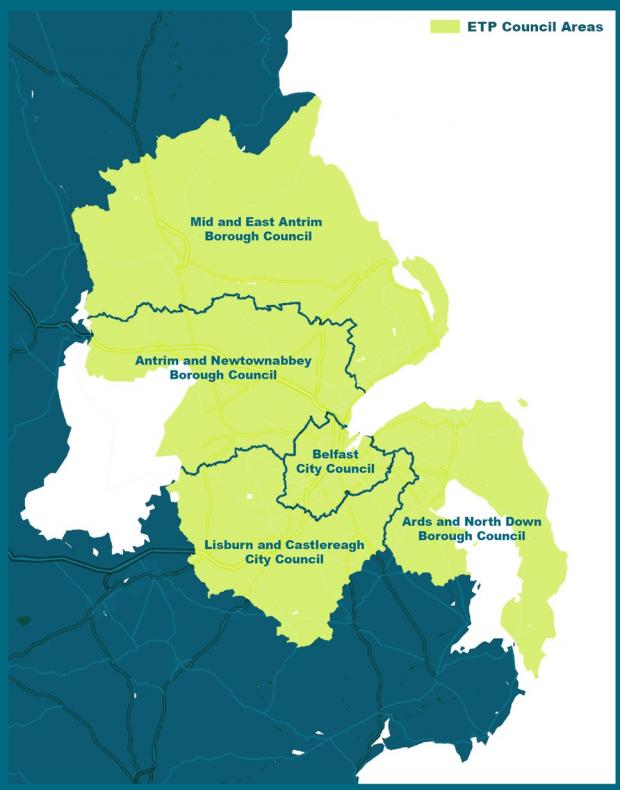
- Antrim and Newtownabbey Borough Council (ANBC);
- Ards and North Down Borough Council (ANDBC);
- Belfast City Council (BCC);
- Lisburn and Castlereagh City Council (LCCC); and
- Mid and East Antrim Borough Council (MEABC)
ETP 2035 aims to ensure that the transport network meets the needs of the people and businesses living, working and visiting the ETP area, both now and into the future.
The ETP area and each of the council boundaries are shown in the map.
Our approach
Transport planning practice is no longer focused on attempting to predict the future in terms of movement demands and providing the required new roads and public transport services. We are facing a very uncertain future where we probably need to make radical changes that address issues arising from the environmental emergency and other societal problems related to our historical over reliance on cars. We are therefore taking a ‘vision and validate’ approach to the development of ETP 2035.
This proactive approach starts with an agreed vision of what we are trying to achieve and then checks if the future transport networks will assist in its delivery. The approach shifts the focus to creating places for people, built around a healthy, safe and carbon neutral vision for the future.
At this early stage of ETP 2035 development, we want to understand your views on:
- The problems we need to solve based on the existing context, both in terms of wider challenges faced by society and also the specific transport challenges you face every day.
- The end goal we want to achieve, the Vision, which will be informed by the existing challenges and the way in which we aim to address them.
- How we will get there, the direction of which is determined by the objectives and guiding principles.
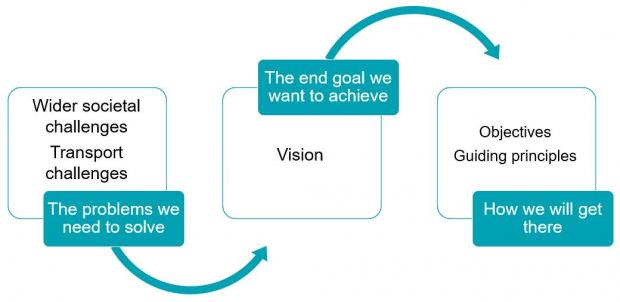
Context (the problems)
Whilst the need for transport arises from where we live and choose to go about day to day activities, transport infrastructure itself also shapes the current and future quality of our environment and towns and cities. In developing the ETP 2035 we therefore need to reflect on the wider challenges for transport whilst recognising the current shortcomings of the transport networks.
Wider societal challenges
We know that ETP 2035 needs to reflect upon and help to combat wider economic, social and environmental challenges for the area. In order to ensure that ETP 2035 complements and supports wider DfI and council policy direction, the scoping of ETP 2035 has been informed by information set out across a range of other sources and policy.
Our review of this wider context confirmed four key overarching themes, echoed throughout local, regional and national policy documents, to be reflected within ETP 2035. Transport has a clear role to play against each of these themes:
|
Tackle climate change |
|---|
The Climate Change Act requires DfI to publish a sectoral plan for transport which contributes towards national carbon emission reduction requirements. The Department of Agriculture, Environment and Rural Affairs (DAERA) outline that transport sector emissions need to fall 43% from 2019 to 2030.
(DAERA, source CCC Advice report: The path to a Net Zero Northern Ireland)
|
Protect the built and natural environment |
|---|
Pollution from vehicles contributes to poor local air quality and the construction of roads and railways can harm the built or natural environment.
|
Drive sustainable economic growth |
|---|
Ensuring that transport enables economic, housing and employment growth, whilst improving the environment, is a key priority for all five councils as well as DfI.
|
Support healthy, safe and inclusive communities |
|---|
The Programme for Government draft Outcomes Framework expresses nine key societal outcomes which aims to bring a new focus to deliver lasting, real and positive change in people’s lives. The role of transport is central to healthy, safe and inclusive communities.
Transport challenges
In 2020, DfI published the findings of a Transport Study of the five councils that make up the ETP area (formerly the BMTP area). The purpose of the Transport Study was to set out an objective, evidence-based assessment of current and future transport issues in the context of the councils’ growth ambitions.
The Transport Study identified a range of issues for consideration as part of ETP, in addition to the wider challenges previously outlined. Full details of the Transport Study findings can be viewed here, while the network shortcomings are summarised as follows:
Draft ETP 2035 Vision (the end goal) and Objectives (the how)
The Draft Vision and Objectives have been developed collaboratively with key stakeholders to represent ETP 2035’s aspirations. A series of seven guiding principles, which aim to bring the vision and objectives to life, have also been defined.
As well as aligning the vision and objectives with wider policy, we also want to make sure that the people who use the transport network in the ETP area can share their views on the draft vision and objectives and the emerging Plan. Public engagement on the draft vision & objectives started on 4 September 2023 and finished on 30 October 2023.
ETP 2035 Draft Vision:

ETP 2035 Draft Objectives:
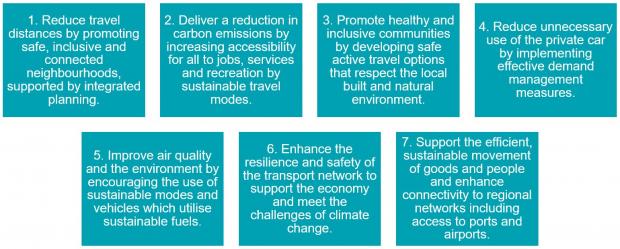
To read about our proposed objectives in more detail, please click here.
Guiding Principles
Key to the development of new transport networks integrated with land use is the understanding that all roads and streets have, to some degree, the dual functions of “movement” and “place”.
- Place = part of a defined local centre and contains key attractors for people to spend time in.
- Movement = part of a connection and will it contain a high number of through people-movements throughout the day.
Seven categories of road and street have been identified ranging from “People Places” where the place predominates to “Strategic Movement Routes” where movement is essentially the sole function.
It is acknowledged that there is no ‘one size fits all’ approach for the varied and dynamic region covered by ETP 2035, and therefore flexibility in the application of the guiding principles characteristics across different geographies is anticipated. However, by applying the overarching principles defined within these wherever possible, the resulting ETP should indeed ‘turn the curve’ towards a focus on people and place as opposed to major infrastructure.
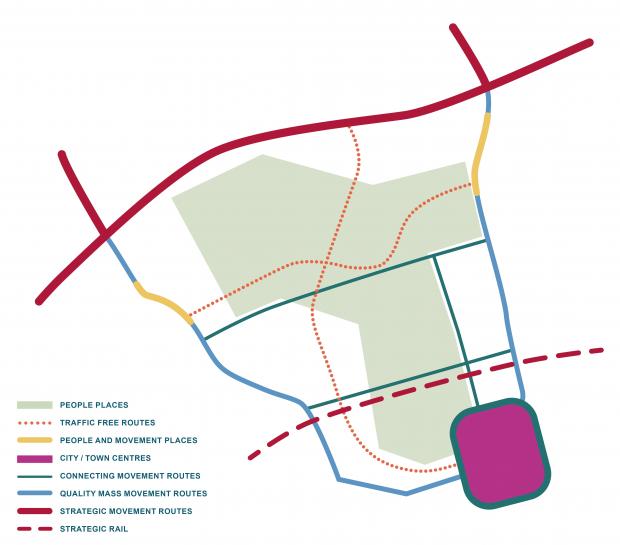
Each guiding principle category is defined as illustrated below. A key for understanding the elements contained within these guiding principle illustrations is provided firstly below:
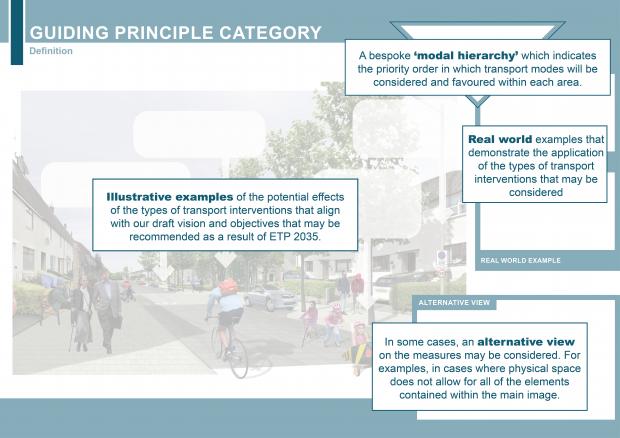
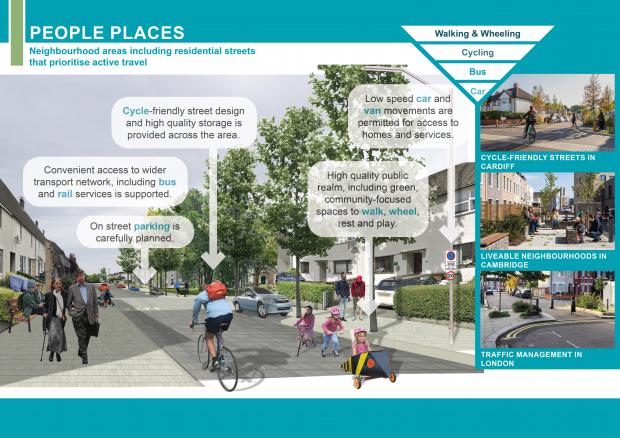
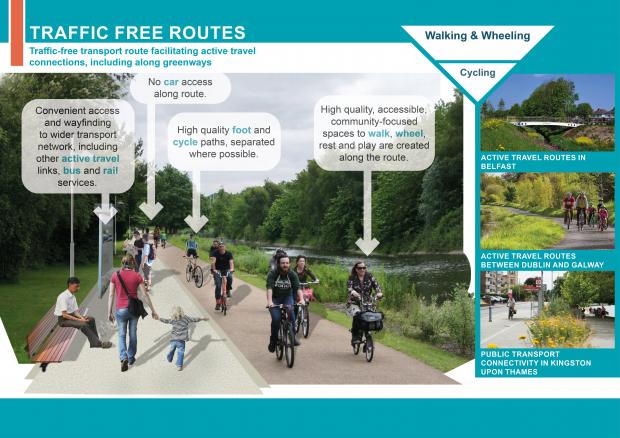
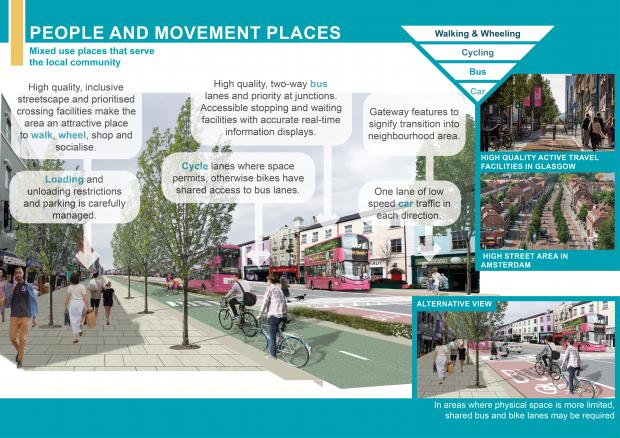
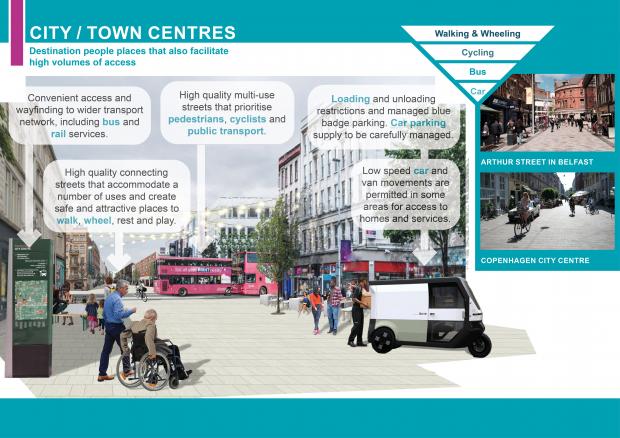
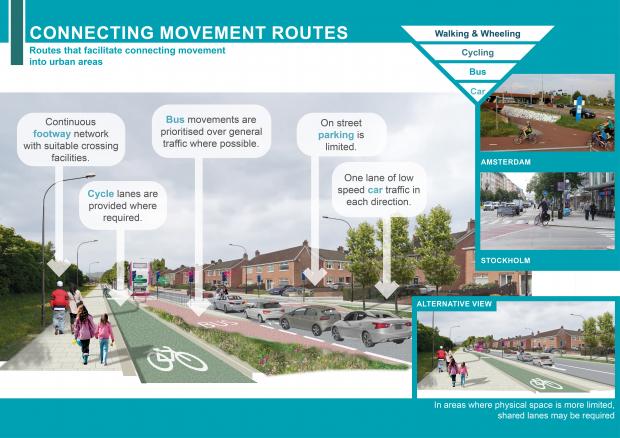
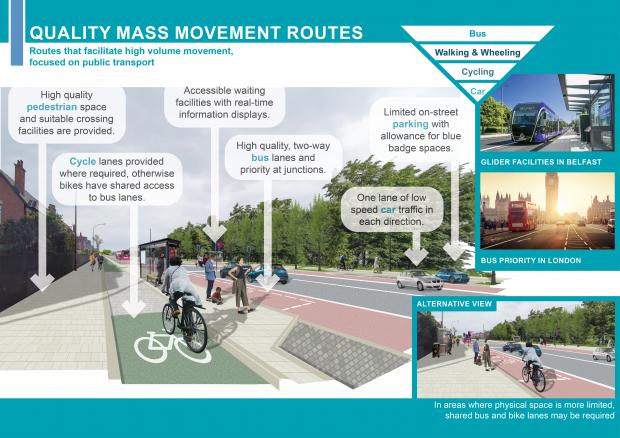
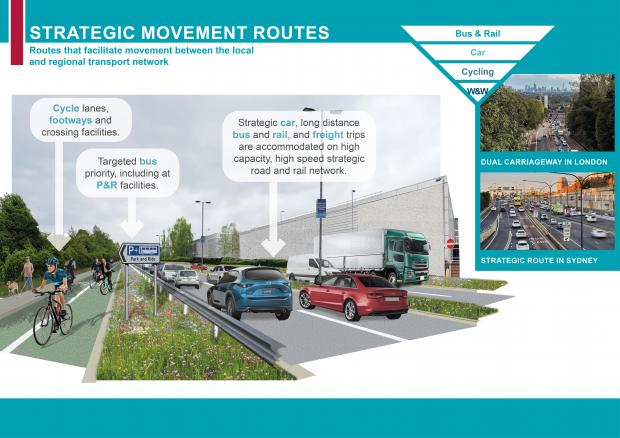
Eastern Transport Plan Launch
DfI undertook a public engagement exercise to launch the ETP between 4th September and 30th October 2023. The Launch Engagement exercise introduced these draft Vision, Objectives and Guiding Principles of the Plan to stakeholders and the general public. It also requested feedback on these, as well as seeking information about transport challenges and future travel behaviours.
A detailed report together with a short summary document summarises the Launch Engagement exercise and the feedback received.
Frequently Asked Questions (FAQs)
A Iist of frequently asked questions about the new ETP is available via the link below.
Next steps and timescales
At this stage we are continuing to develop the transport plan. ETP 2035 will be developed in a phased approach in alignment with the publication of each council’s draft Local Development Plan. The latest timescales for delivery of each council’s Local Development Plan are available on their respective council websites.

